Bloody Perfect: A Q&A With The Revenant‘s Costume Designer Jacqueline West
The tale of Hugh Glass, a 19th-century trapper and explorer mauled by a grizzly bear and left for dead by John Fitzgerald, one of his men, became the stuff of legend. Never quite on the scale of Johnny Appleseed or Paul Bunyan, but subject to similar embellishment, Glass’s story was told and re-told to stretch his wounded crawl back to civilization and revenge from, for instance, a truthful eighty miles to a ludicrous 200, with myriad other details hyperbolized until Glass’s own nature was mostly obscured. Now, a version of the man and his journey is brought vividly to life by Alejandro González Iñárritu, in a believable and human version of the survival tale.
Glass’s story is a wintry one, and Iñárritu chose to shoot on snowy location, mostly in Canada and Argentina, in natural light. In conjuction with those conditions, bringing the frontier tale to realistic life are the costumes, an incredible and nuanced range of wools and furs and leathers and every conceivable makeshift boot, hat, and glove one could imagine, the layers and destruction of which build over the course of the expedition and Glass’s pursuit. To clad Leonardo DiCaprio (Glass), Tom Hardy (Fitzgerald), Elk Dog (Duane Howard), and the rest of the white adventurers and Native Americans of The Revenant, Iñárritu tapped the esteemed costume designer Jacqueline West. Known for films including Argo, The Tree of Life, and The Social Network, for this film, West turned out costumes unlike anything seen before in her repertoire, or really, in any film in recent history. We chatted with West on their dual aesthetics and functionality, working with Iñárritu — “he’s a grandmaster — in the Renaissance, he would have been a master painter” — and how she managed and planned for the ongoing and inevitable destruction of her materials.
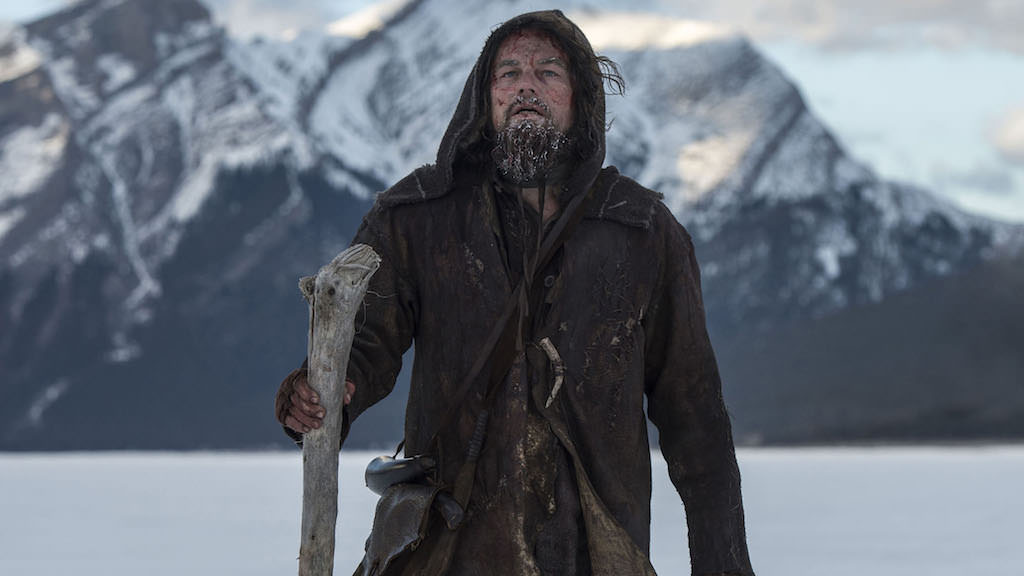
Leonadro DiCaprio in 'The Revenant.' Photo Credit: Kimberley French Copyright ©20th Century Fox
Since Hugh Glass and his cohort have real-life predecessors, where did you look for source material and inspiration?
Any movie like this starts with the research, of course. I was an art historian in school, so that’s what I loved to do. I read every book on Hugh Glass. I have a ranch in South Dakota, and he’s a legend there. There’s a sign on the highway that says “Hugh Glass was mauled by a bear here.” As you drive south, they have markers of his crawl, keeping the Black Hills always on his right. A friend of mine, Gail Potter, is the curator of the Museum of the Fur Trade in Nebraska, and the second Alejandro asked me to do this, I called her. They have exact clothing from this era. I used so many incredible drawings from the period, I read all the diaries I could, I read Forty Years a Fur Trader. Gail helped me a lot, feeding me things along the way that she would find.
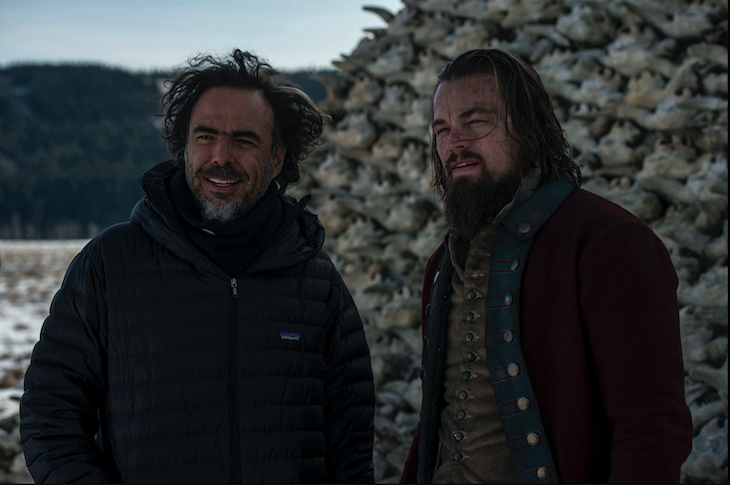
Director Alejandro G. Inarritu and Leonardo DiCaprio. Photo credit: Kimberly French. Courtesy 20th Century Fox
After that, you have to start relying on your imagination. Then you have to find each character. Start with them naked. Select things you feel they would choose, given where they came from. And all that being said, you still have to filter it through Alejandro’s vision. He’s almost a metaphysical fimmaker. I would make a costume and show it to him, and if I didn’t see that emotional and philosophical reaction…he was a great filter for all that research. And then there was nature to contend with. As the weather went from crisp fall to almost apocalyptical winter, nature became this surgical tool, removing people’s egos. People starting putting furs on themselves, and I thought each one should reveal their inner character. So with Jim Bridger (Will Poulter), for instance, I put him in this buffalo skin turned inside out. Tom Hardy’s badger, was based on how the badger survived. As far as Hugh Glass, the thing about the bear skin [which he dons] was very poetic. It was something Alejandro wanted from the very beginning, and I remember saying to Leo, it’s kind of poetic the thing that almost killed you also saved your life. It’s a beatuifal poetic twist on the bear.
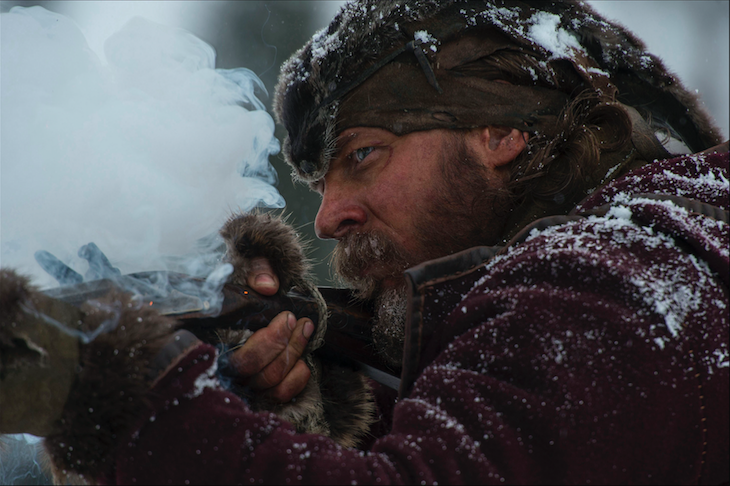
Tom Hardy plays John Fitzgerald. Photo credit: Kimberly French. Courtesy 20th Century Fox
Can you tell us a bit about the design concept for the fim’s Native American characters?
Native americans usually have one animal that becomes their talisman. I put a full head of a wolf on the back of Elk Dog’s (Duane Howard) costume because he was the intelligent stalker through the woods. Also he has the corn cob on the front of his costume because it’s a symbol of the mother Earth, and that if they die, they will be buried and corn will sprout again. And the bear tooth necklace signifies power, having taken many bears, and gotten food and furs for his tribe. I put him in a bleached skin and his makeup was very ashen, and everything about him was very gray wolf. I think I even painted a wolf motif on the hide he wears through the end of the movie. Elk Dog understands Glass, he’s a real man of the outdoors.
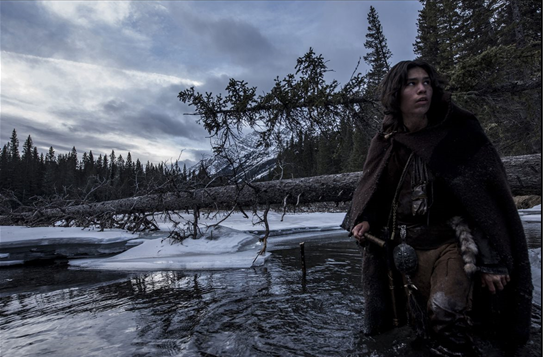
Forrest Goodluck as 'The Hawk.' Photo Credit: Kimberley French Copyright © 2015 Twentieth Century Fox Film Corporation. All righ
And how did you differentiate between the trappers and explorers themselves?
Well, Glass is out there for different reasons than Fitzgerald. From the very beginning, one of the first things I showed Alejandro was this warrior in a hood, and it looked almost monastic. In the beginning, Glass is in a beaver hood which almost looks like a monk’s hood. He communes with nature, you feel he talked to animals, and when he shot animals, he only took them for survival. He wasn’t mercenary, or part of the fur trade beyond making a living showing them the West. That said, as his costume progresses and he’s stripped by this bear almost naked, he has to get [clothed again almost] sinew by sinew. Later, he has the cape on, which is almost capucin-monk-like. He stays that kind of mystical and metaphysical person out in the woods, through the whole symbolic journey. It’s poetic, when he climbs out of the horse, naked, it’s almost a rebirth, a rising of the pheonix out of the ashes. [Mini-spoiler: Glass survives a night inside the body of his deceased horse.] At that point you feel the revenge has turned into something else. Through all that pain and agony, it’s almost a cleansing. Nature is such a character in this film, it’s like god, it does what it wants with man. I had Alejandro’s guidance in this — he always said it was an enlightenment out of pain. Glass becomes more monk-like as he does his journey, but the other trappers become more animal-like. They clad themselves with more and more, anything to keep warm, wrapping their feet in whole squirrels. But Glass became more spiritutal and monk-like.
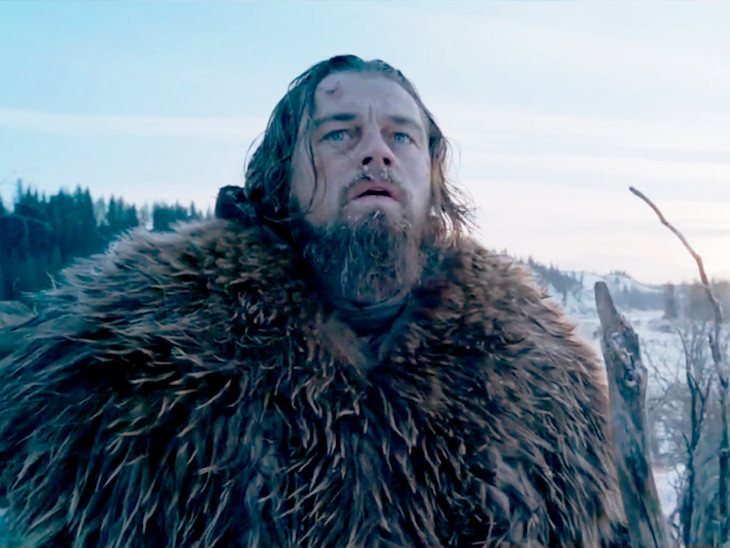
Everything these men wear is original. How on earth did you do it?
With a very big crew of Canadian leatherworkers. They hand-sewed everything. We used heavy waxed cotton thread that looked exactly like sinew, the closest replica you can get. All the robes were handpainted and aged. We made every moccasin. The costumes had to be a progression, increased layerings of skins and patinas. I had a brilliant crew making all of this. We made all the Native American costumes, and I have a ranch next to a reservation so I did tons of research on all the Northern Plains tribes, and how they differed from each other and traded with each other. There’s an interesting fact about the trappers — native women didn’t want white men to wear the same clothes as their men. So the trappers would hire native women to make them clothes, and they would make their Western clothes but in native materials. They either wore wool or fur, but it was all cut on European patterns. The coats the men wear have no resemblance to the war shirt that all the Sioux and Mandan, Pawnee, and Arikara wear, for instance — the native women were making their clothes and moccassins, btu made sure to make them not resemble what their husbands and sons wore. Even the pants were dropped pants, not leggings like those of the natives. It was really clothing for two different worlds.
And given the locations, how functional were the clothes? Shooting in freezing conditions, it looks like what the characters wear is probably warmer than some modern gear.
It did function in the environment. When I first gave Will Poulter [who plays fellow trapper Jim Bridger] his coat, the film needed to establish a group getting off the keel boat, and how they got their things. There were certain things I felt they would be carrying on the keel boat. So when they get off and abandon it, they have to have certain things on them, because all they would have wanted to carry were the pelts [for future sale]. When I first put it the coat on Bridger he said, “oh it’s so hot,” and then later when it got colder, he was the warmest of all of them. It was all really functional. I think Murphy (Kristoffer Joner) has a coat from Hudson Bay that we lined in fur, and he said it was warmer than his North Face.
How many versions of each costume did you have to have, given the punishing conditions in which the film was shot?
Everybody had about six of everyting and I think Glass had about 20. There were different levels of deconstruction before it got reconstructed. They were in freezing water, so we’d wait all night long to dry the costumes, but in those conditions, they wouldn’t even dry. You really had to think ahead, and be very aware of everything that could happen to these costumes, and be ready to repair them in the way they would have, or layer them they way they would have. The mocassins, we basically wrapped in fur. But I didn’t want to keep the actors too warm, because I wanted you to see the conditions on their faces. That was really important to Alejandro, to make it look like it had been shot then, not now. He’s a stickler for it, everything had to be very real, Leo’s costumes had to be caked with his “own” blood, and there had to be a wet and a dry version. And it really looks like he’s wearing his own blood.
In that case, were all the costumes destroyed by the end of the shooting?
We still have one of every level that we kept intact, just to be able to display them. Fox and New Regency really wanted to own them. So there are actually costumes left.
And how was working with Iñárritu for the first time?
It was a wonderful experience. I considered him a real kind of metaphysical director, he tells stories very poetically, he tells a psychological metaphysical tale, he’s an incredible storyteller. He’s very collaborative with the costumes. I think I showed him every single character. And we put them on camera just to see how they’d look in natural light, before we shot. He really wanted to tell the story of the animals, natives, and Glass — every part of this story was important to him. We rehearsed and rehearsed in different lights and environments. He one day called me to come see him at a river. He had me put waders on to come out to the river to talk to him, and he said he just wanted me to stand in this river, so I could see what the actors were going to have to live in, before I made their costumes. He was wonderful. And I don’t think any of us who survived will regret it. It’s something I’ll always be really proud I worked on. He lured me back from an Italian vacation to start this, so you can imagine how compelling he is! His passion to tell a story, he’s so compelling, because you want to see and show him the clothes he’s seeing, and what he’s trying to tell about each chracter. You want to get there for him.
Thinking about all your past films, is it even remotely possible to compare your experience here with those shoots?
As far as any movie I’ve ever done, the closest would be Terence Malick’s New World. But I can’t compare it to anything I’ve ever worked on. It is epic. In some way I felt that the Native Americans were the real heroes of this film. They were the kind of mythical people who we came in and took everything from and invaded. Being able to portray these proud beautiful people was a privilege. I have a friend who is the chief of the Patawomecks, Chief Two Eagles Green, and he called me after he saw the movie and said this was one of the most beautiful portrayals of Native Americans that he’s ever seen. And that was really Alejandro.



